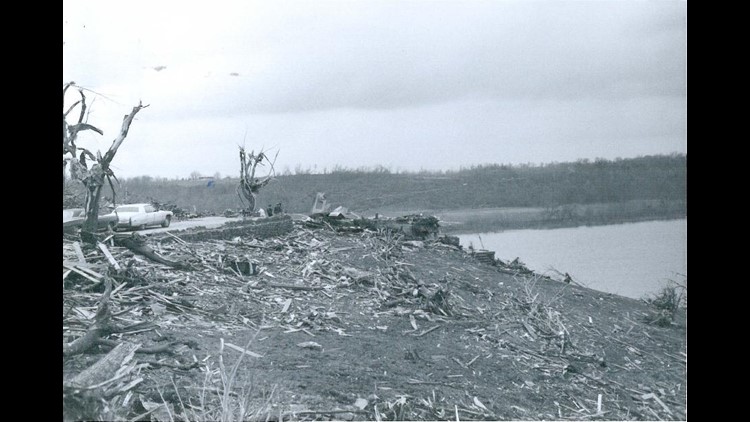LOUISVILLE, Ky. (WHAS11) -- 42 years ago today the second-largest tornado outbreak in U.S. history struck Brandenburg and Louisville before moving on to Xenia, Ohio.
The 1974 Super Outbreak produced 148 tornadoes in 13 states, 30 of which were classified as F4 or F5.
An F5 twister killed 31 people in Brandenburg before taking three lives and injuring 207 as it moved through Metro Louisville.
Liz DeHart of the Olmsted Parks Conservancy says this historic event still impacts Louisville to this day.
DeHart says when the 1974 tornado came through Louisville it nearly wiped out the entire tree canopy in Cherokee and Seneca parks, which in turn led to the proliferation of invasive species as sunlight began to reach ground-level plants.
Bush honeysuckle and various species of vines began to ravage the park, and if conservancy efforts had not begun when they did ten years ago, DeHart says the park system’s trees could have been lost.
While the 1974 tornado directly affected Cherokee and Seneca parks, additional storms in 2008 and 2009 have spread the scourge of invasive species into Shawnee and Iroquois parks.
In 2015 over 1,000 volunteers helped the Conservancy clear out invasive species and replace them with native species in an effort to encourage new tree growth.
One particularly helpful role in that effort is that of the Park Steward—what DeHart calls a “Super Volunteer.”
Park Stewards complete class work to learn about native and invasive plants, park history and conservation efforts.
Once certified with an herbicide license, Stewards will adopt a section of a park and maintain it with the aid of the Conservancy.
DeHart says the main benefit of the Park Steward program is that it allows conservation efforts to take place independently throughout the entire park system, in addition to what the Metro Parks and Olmsted Parks Conservancy do on an institutional basis.
With spring coming into bloom, the Conservancy is looking for a new batch of volunteers to help stave off the continued threat brought on by the Super Outbreak over four decades ago.
“We need the community to get involved through volunteering or donating because it’s a lot of work to take care of the parks, and if the community can come together and help, it makes the parks healthier for everybody,” DeHart says.
To get involved with the Olmsted Park Conservancy visit olmstedparks.org or contact Sarah Wolff at (502) 456-8125.



